As homeowners become more environmentally conscious, eco-friendly roofing options are gaining popularity. From reducing energy consumption to using sustainable materials, there are many ways to make your roofing project more environmentally friendly. In this post, we’ll explore the environmental impact of different roofing materials and discuss sustainable options that benefit both your home and the planet.
The Environmental Impact of Traditional Roofing Materials
Traditional roofing materials like asphalt shingles and metal roofs can have a significant environmental impact. Asphalt shingles are petroleum-based, contributing to pollution during production and disposal. Additionally, they are not recyclable, which means they often end up in landfills after they are replaced.
Metal roofing, while more durable and energy-efficient, is often made from non-renewable resources. The production process for metals like steel and aluminum can also be energy-intensive and polluting.
Eco-Friendly Roofing Options
1. Solar Roofing Solar roofing tiles, also known as solar shingles, are an excellent way to make your roof more environmentally friendly. These tiles function both as a roof and as a source of renewable energy. Solar roofing can help reduce your home’s carbon footprint by harnessing the power of the sun to generate electricity.
Pros:
- Can significantly lower energy bills by generating electricity.
- Reduces reliance on non-renewable energy sources.
- Adds value to your home.
Cons:
- Higher initial installation costs.
- Requires adequate sunlight to be effective.
2. Cool Roofs Cool roofs are designed to reflect more sunlight and absorb less heat than traditional roofing materials. This can help reduce the amount of energy needed to cool your home during the summer, making it more energy-efficient. Cool roofs are typically made from reflective coatings or materials like white or light-colored tiles.
Pros:
- Helps reduce cooling costs and energy consumption.
- Reduces the urban heat island effect.
- Extends the lifespan of your roof by minimizing heat-related wear.
Cons:
- May not be as effective in colder climates.
- Limited color options for aesthetic preferences.
3. Recycled Roofing Materials If you want to go green but still prefer traditional roofing options, consider using recycled materials. For example, recycled shingles made from rubber, plastic, or wood fibers are durable and environmentally friendly. Recycled metal roofing is also a sustainable choice, as it reduces the demand for new metal production.
Pros:
- Reduces waste by reusing materials.
- Durable and long-lasting.
- Helps decrease the need for virgin resources.
Cons:
- May have a slightly higher cost due to manufacturing processes.
- Limited availability depending on your location.
4. Green Roofing (Living Roofs) Green roofs, also known as living roofs, involve covering a roof with vegetation. This type of roofing helps absorb rainwater, provides insulation, and supports biodiversity. Green roofs can be particularly beneficial in urban environments where green space is limited.
Pros:
- Absorbs rainwater, reducing runoff and helping with stormwater management.
- Enhances insulation, which can lower energy costs.
- Creates a habitat for local wildlife.
Cons:
- High installation and maintenance costs.
- Not suitable for all climates or building types.
Conclusion
Eco-friendly roofing options are not only good for the environment but can also help reduce your home’s energy costs and increase its overall value. Whether you opt for solar roofing, cool roofs, recycled materials, or green roofs, there are plenty of sustainable choices to suit your needs. By making environmentally conscious decisions, you can help protect the planet while ensuring that your roof performs at its best, contact us today for a free quota on your eco-friendly roof.
